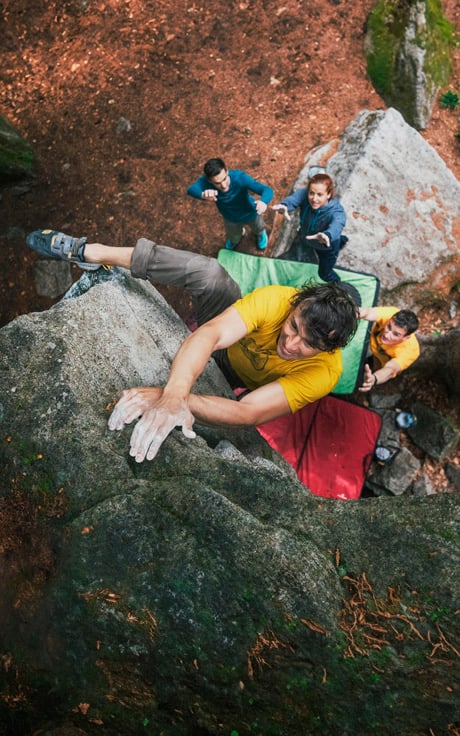
Climbing is an interesting sport that emerged in the 1980s. But how do you get started with this Olympic sport? Our article will tell you.
Some information about climbing...
This discipline emerged in the 1980s from the passion of a small group of young Americans who in the previous decade had been the first to consider climbing as an independent activity rather than just a means to achieve mountaineering goals. Over the years, sport climbing has gained widespread popularity and an increasingly high profile in the sports world.
From the sport’s Olympic debut at Tokyo 2020, to the growing number of city gyms that allow anyone to approach this vertical world easily and safely, the conception of the activity has changed drastically.
Today, the category includes different types of climbing. The first key distinction is between outdoor climbing and indoor (gym) climbing. But there are other distinctions as well. You can try your hand at bouldering, climbing small rock formations, as well as practicing traditional or sport climbing; for the more adventurous, there’s also free soloing, where you climb without protection.
Novice climbers may have many questions: Will it be safe? What equipment is needed? Where is the best place to start? Today, getting into climbing is easy — so easy that children sometimes start climbing even before they learn to walk. You just need to follow a few simple key rules. Let’s take a look at them together.
The initial approach
There’s no universal rule on how to approach sport climbing. Certainly, the advice we’d give to learn it safely is to start exploring this discipline by taking a course. There are many organized by associations, climbing gyms, clubs, and mountain guides.
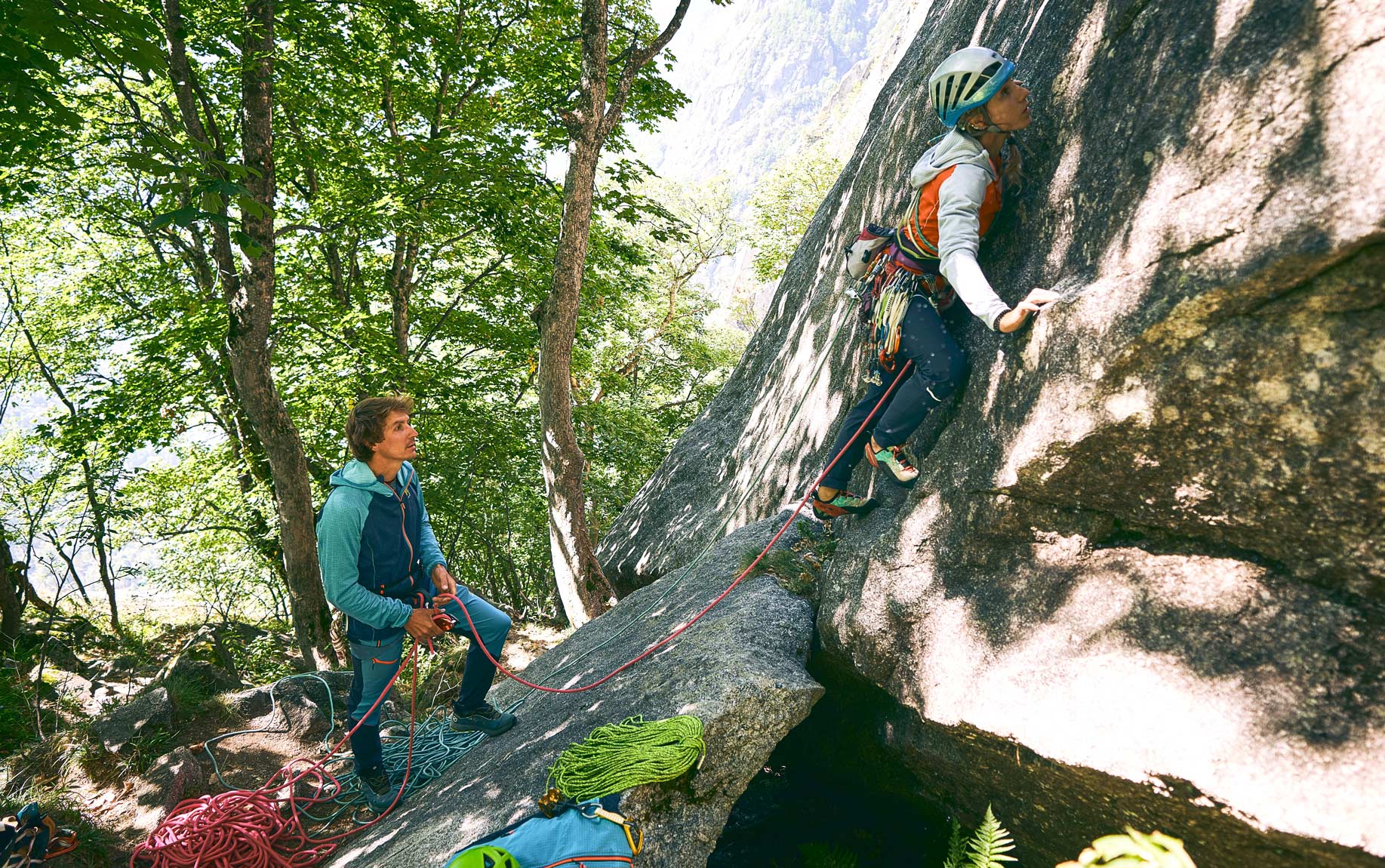
Being assisted by an instructor can help you to start climbing correctly, in terms of both intensity of effort and technique. When you want to get into sport climbing, learning the basic technique — from the rules of balance to the classic triangle position — is the first step.
An expert who supervises your first moves will be able to immediately identify your starting level. In this way, you’ll begin to condition your body to the effort required and to learn the first movement patterns based on your initial ability, avoiding unnecessary stress and annoying injuries.
Rock or plastic to start climbing?
Should you learn to climb in an indoor gym or on rock at a crag? The answer to this question may vary based on the direct experience of the individual, but in general, starting in an indoor gym is recommended because it allows you to learn the technique better, thanks to the convenience of the layout and the repetitiveness of the moves.
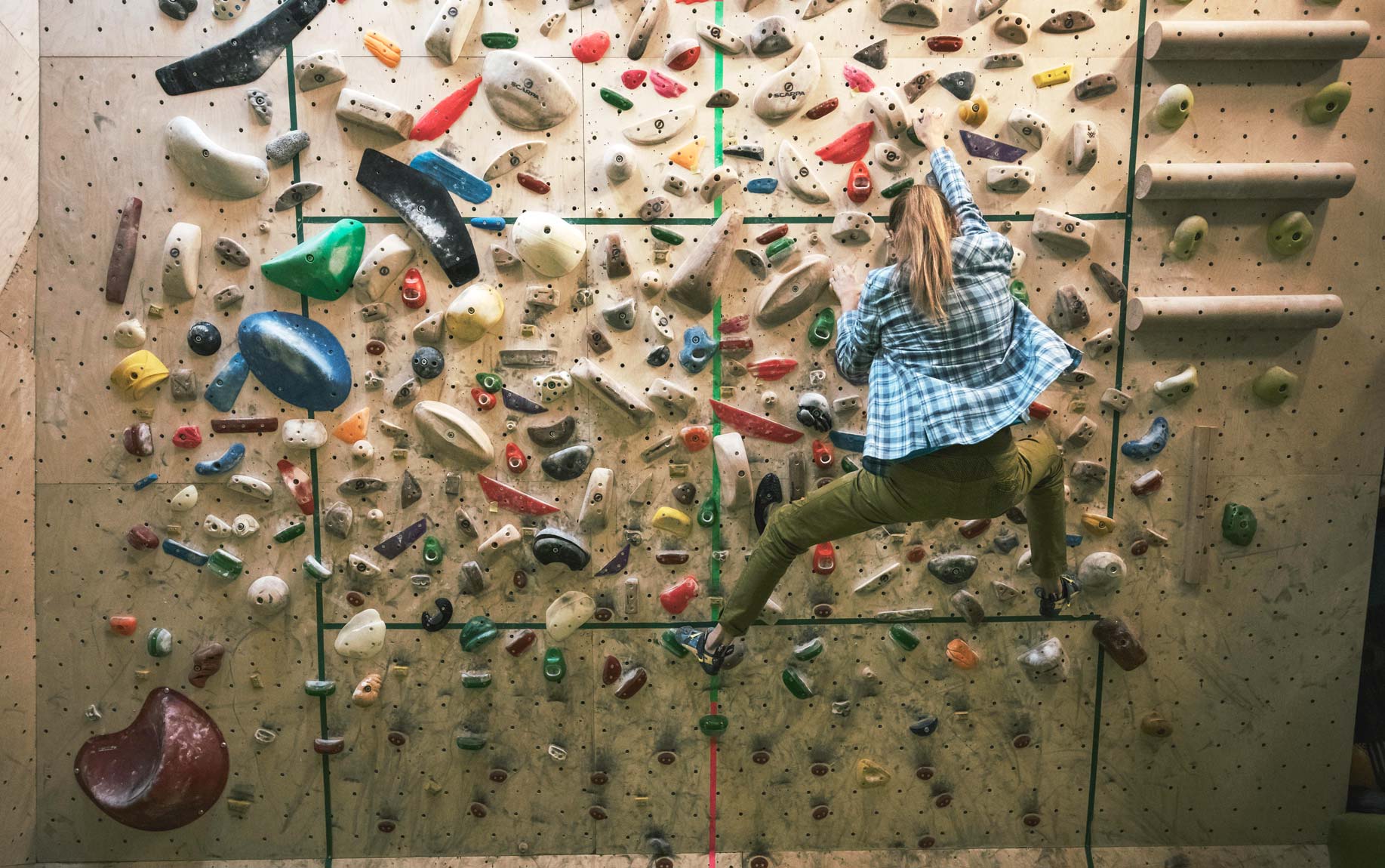
In the gym, you have the time and safety to concentrate on the moves in an environment that allows you to make your first efforts while remaining relatively close to the floor. Thanks to the safety mats that cushion falls, it’s not necessary to rope up; this keeps the focus entirely on technical training, so you don’t have to immediately deal with equipment and heights.
Once you’ve learned the basics and acquired the necessary familiarity, it is critical, according to our outdoor experience, to go outdoors and climb on rock. Outdoors, on a wall, you can experience the excitement of the element and the adrenaline that make climbing such a loved and widely practiced discipline.
The recommended equipment for climbing
When you begin indoors, you don’t need your own equipment to start climbing, as most gyms supply all the gear to those who want to try the sport. If you start on rock, participating in a course will also provide you with easy access to all the equipment, or the opportunity to rent it.
This will give you time to understand whether you really love the sport and want to continue with it before committing to the considerable expense of buying the essential climbing gear. But what equipment are we talking about? Rope, harness, helmet, shoes, belay device, quickdraws, chalk, and clothing.
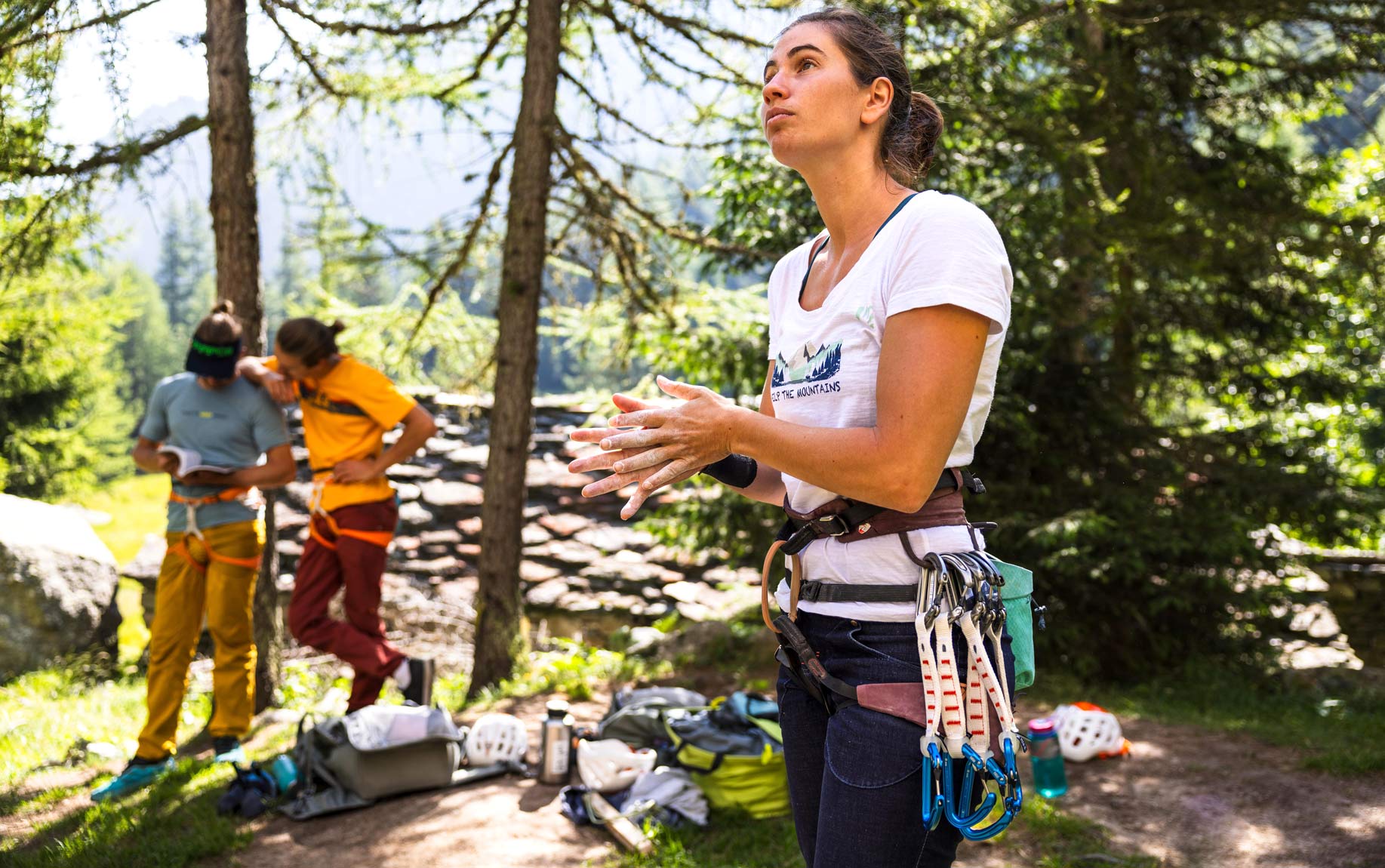
Rope
The ropes used in climbing are dynamic ropes whose task, in addition to catching you in the event of a fall, is to stretch and cushion the fall, preventing repeated falls from causing micro traumas to the body. For single-pitch climbing, a 70-meter 9.8-millimeter-diameter rope is sufficient. There are also thinner ropes, but for starting out a thicker rope is better (it slides less in the belay device, ensuring greater durability).
Harness
The harness represents the connection between the climber and the rope. It has the important function, in the event of a fall, of distributing the shock force across several points, always keeping the body in a safe position. It’s important that the harness offer adequate freedom of movement, comfort, and lightness so as not to hinder your movement.
Helmet
A helmet is very important when climbing on crags, to protect against falling stones from above and also potential blows against the rock. Although its use is not mandatory, it’s always good to consider what the risks are and how much a helmet can help.
Shoes
There are dozens of models, each with different characteristics and functionalities. To start, the advice is to focus on models that are not excessively arched and have a sole that is not too rigid — so less-aggressive shoes, with a snug but comfortable fit. There are many solutions; we recommend that you try different ones to find the one that’s right for you.
Belay device with a screw-lock carabiner
To attach it to the harness: The market offers a great variety of belay devices. These can be divided into two basic categories: self-locking (GriGri, Yo-Yo, Eddy, etc.) and non-self-locking (bucket, figure eight, etc.). The former automatically block the rope in the event of a fall, while the latter require prompt action by the belayer to stop their climbing partner’s fall.
Quickdraws
These are made up of a pair of carabiners, one with a straight lever and one with a curved lever, connected to each other by a strap. They will be necessary when you start outdoor climbing, to attach the rope to fixed anchor points on the wall when you find yourself first in the party.
Chalk and chalk bag
This accessory is not essential to get started, but it’s still useful and can make a difference. The chalk helps keep your hands dry from sweat during the climb, allowing better grip on the holds. You can opt for a liquid or solid version.
Clothing
For climbing, clothing must be lightweight and stretchy and allow full freedom of movement. There are those who prefer the feel of natural materials, and those who prefer the performance of synthetics. At the crag, though, we recommend always having protective clothing (such as a thermal or waterproof jacket) with you, so you’re prepared for sudden weather changes.
This is ultimately all you need, but don’t get discouraged if you don’t find everything immediately. As you will have noted, some things will only become necessary along the way. Start by using the equipment that will be provided to you, or rent it; there will be time to purchase your own equipment.
Today, in physical or online stores, you can find many complete climbing kits, which are excellent for getting started independently. When choosing your harness, shoes, and clothing, take all the time necessary to ensure that you purchase the products that best meet your needs.
At what age can you start climbing?
Climbing is for everyone; there’s no age range that’s considered best for starting climbing. Indeed, children as young as three or four can start. The ideal is to begin with bouldering, where the issue of safety is less critical, and then gradually move on to the first experiences secured from above and to the first real climb.
Climbing develops strength and coordination, which is why it’s an excellent activity to practice at any age, from very young to older — it’s never too late to start. In addition to physical strength, climbing also builds mental strength as well as creativity, which is necessary to find a way to reach the next hold.
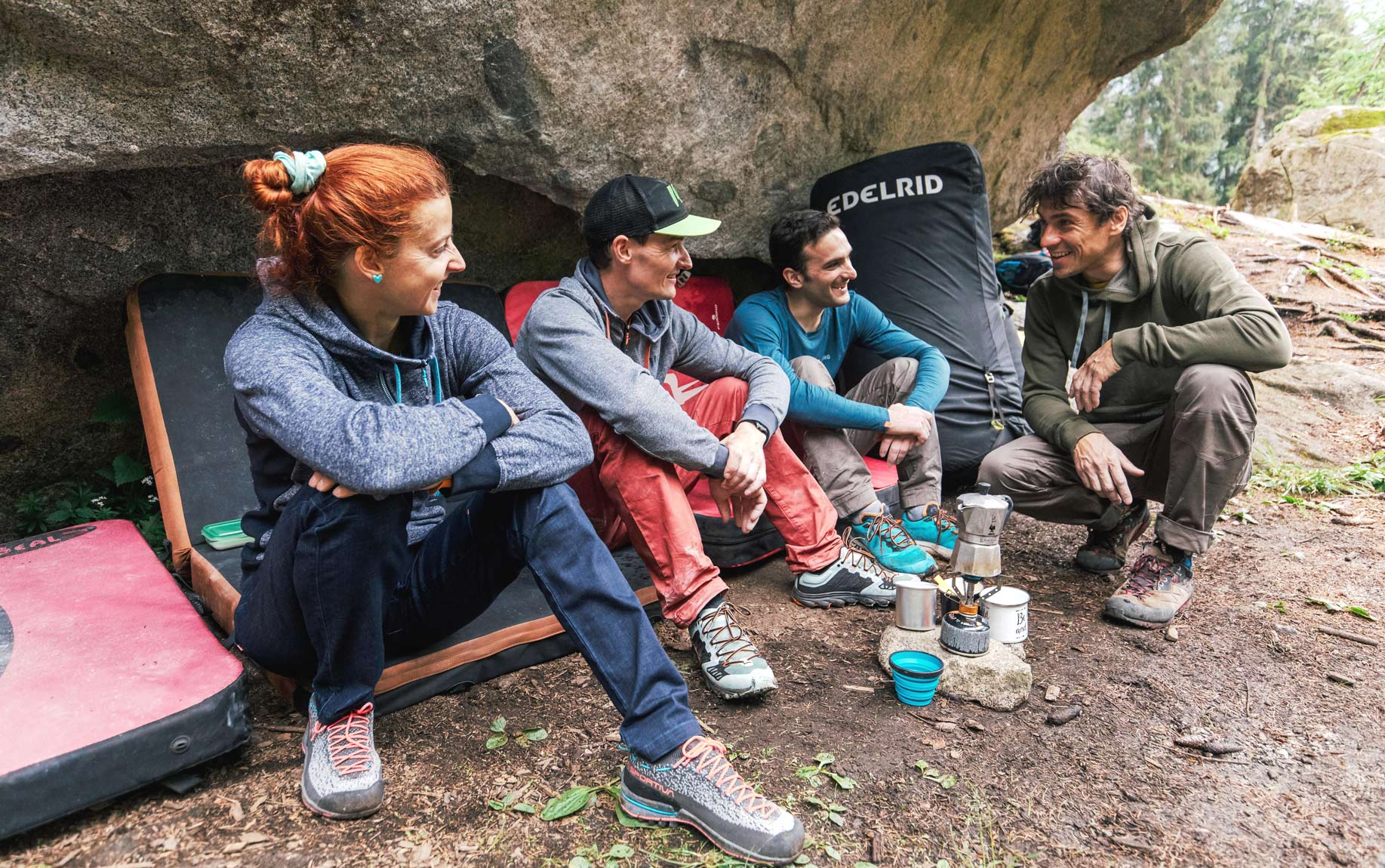
Although it’s an individual sport, climbing also offers many opportunities for companionship and sharing, where children can play and have fun in the company of their peers. When it’s time to climb outside, children are encouraged to have a good relationship with nature and to spend a lot of time outdoors.
What physical preparation is needed for climbing?
A beginner might expect sport climbing to require great physical strength, but instead it’s more a question of knowing how to best manage technique, balance, and moves. These are the three factors that it’s essential to focus on from the very beginning if you want to improve and move up grades.
Obviously, a minimum amount of strength is needed, but it will be developed over time and with preparatory training for the activity. Climbing is in fact an excellent workout because it involves all the muscle groups. Initially, it’s enough to be healthy and to try to climb as much as possible, seeking out different and varied experiences, but without ever exceeding your body’s limits.
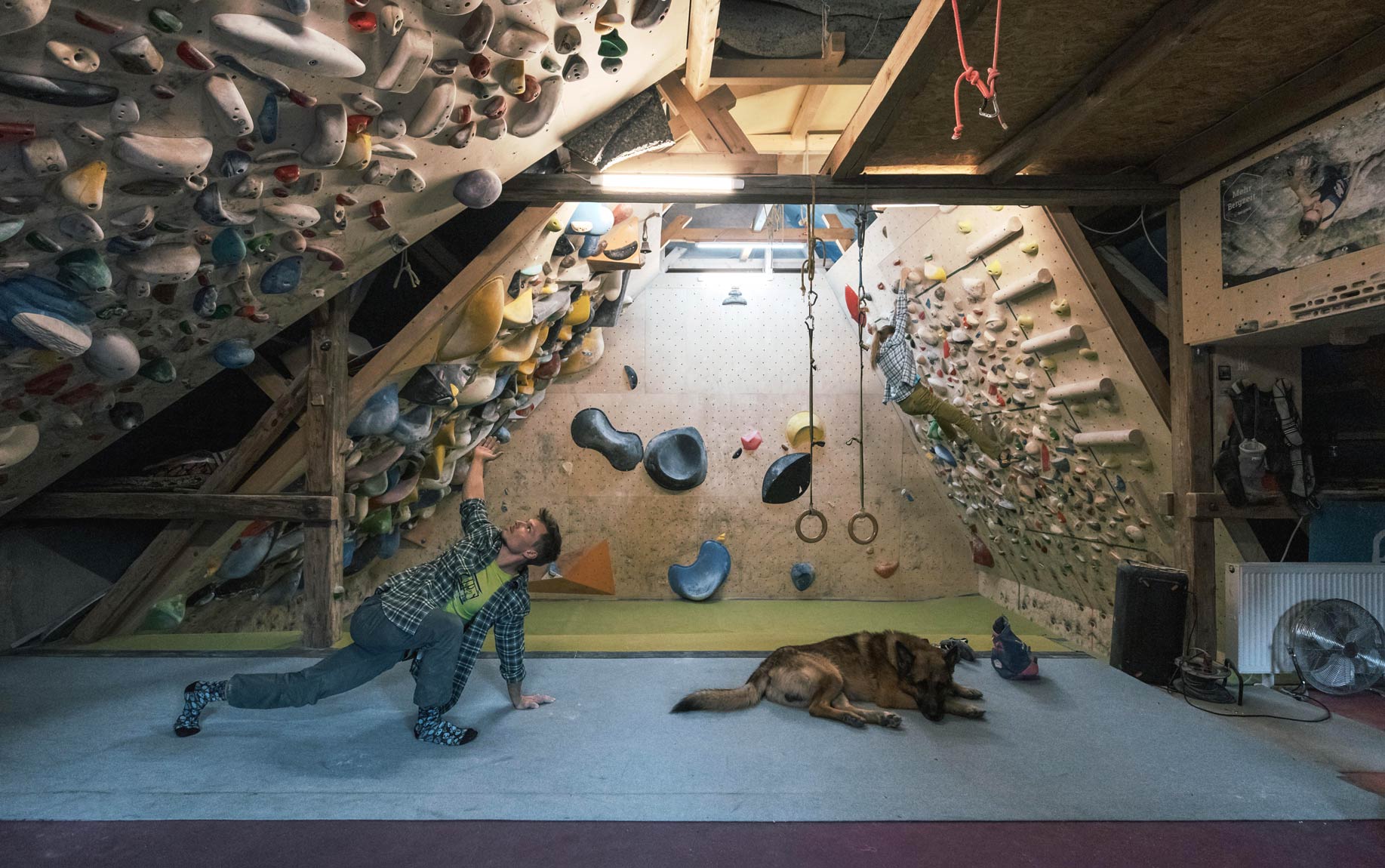
Specific training programs can wait; the body (especially the tendons) has its own schedule that must be respected, and it will get itself in shape by climbing. A good habit to establish right away is stretching, which will give you mobility and flexibility — essential for climbing, but also for injury prevention.
In conclusion, what should you keep in mind when starting to climb?
We’ve seen the steps to get started with sport climbing, a discipline that, if you learn its basic rules from the very beginning, is safe and does not require preparatory physical training. You can start taking your first vertical steps at any age, even very young, obviously always under the watchful eye of an instructor who will enable you to avoid many of the typical beginner’s mistakes.
It’s best to start climbing on plastic in the gym, and it’s not necessary to purchase all the equipment immediately. Technical clothing is also a factor that can improve your experience: freedom of movement, stretch, lightness, and protective clothing make a difference, especially outdoors.
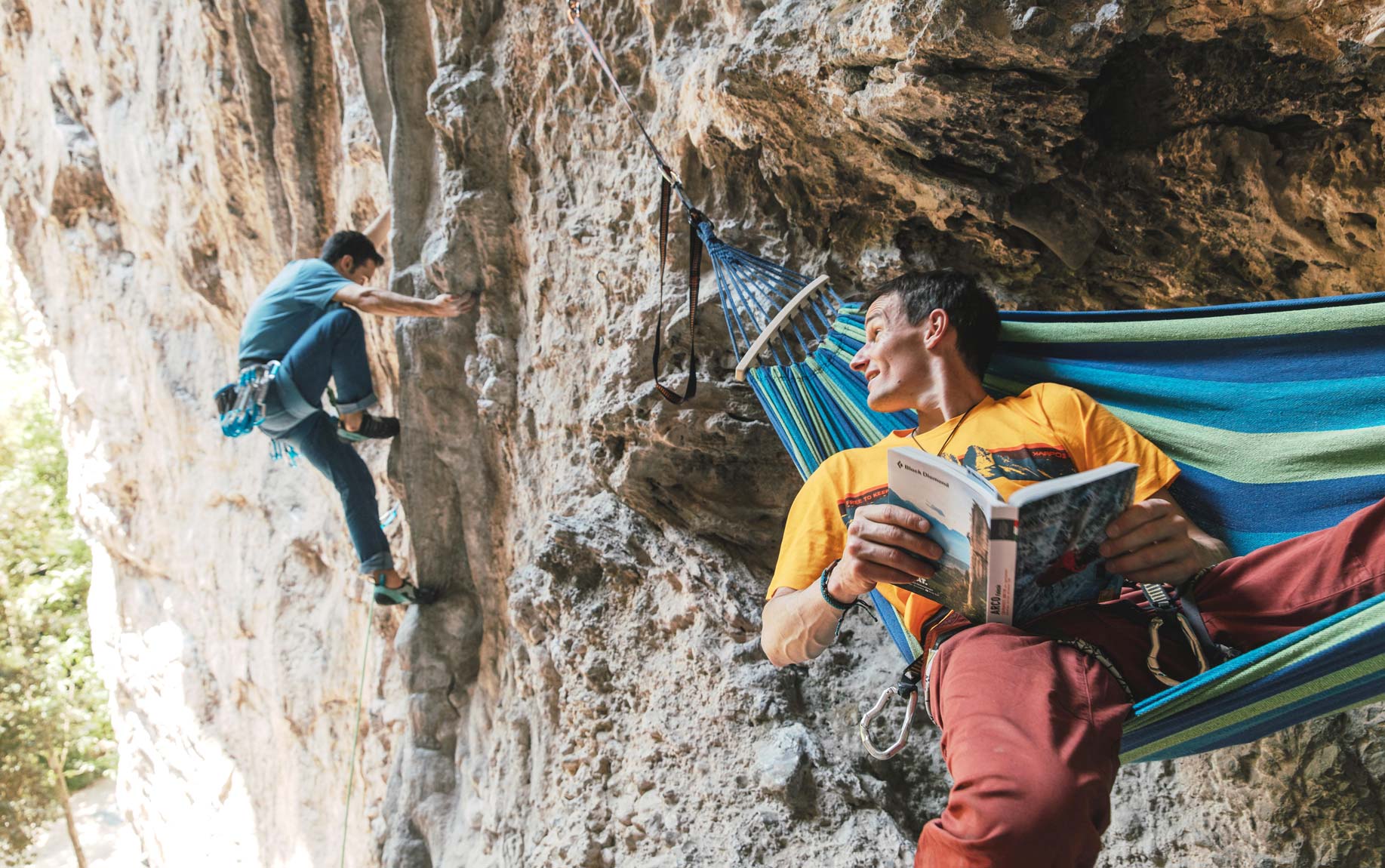
Patience is essential, and skipping steps is never recommended. The love of climbing will blossom when you appreciate the endless journey to overcome your limits. Now you have all the information you need to get started — all you have to do is attempt your first moves and defy gravity … happy climbing!